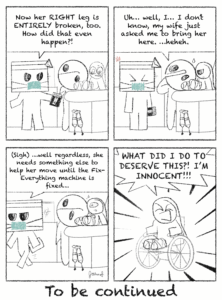Tall and comfortably plump, William Kentridge greeted spectators as they squeezed inside the Welles-Brown Room. Recognized as among South Africa’s most influential artists, Kentridge visited UR last week, speaking about his 40-year career.
Referencing his numerous multimedia productions and projects, Kentridge focused on “No, It Is,” displayed at the Art & Music Library, “Seven Fragments for George Méliès with Journey to the Moon and Day for Night,” displayed in Hartnett Gallery, and his collection of Soho & Flex charcoal animations on display at Dryden Theatre.
Kentridge has spent his entire life in Johannesburg, which has been a vital influence to his work. He earned a degree in politics and African studies from the University of the Witwatersand. But Kentridge fed his love for the arts studying at the Johannesburg Art Foundation and acting with the Junction Avenue Theatre Company.
Wandering into his mid-20s searching for his life’s purpose, Kentridge made many amateur attempts in different artistic fields, inevitably “fail[ing] into success.”
Kentridge found himself motivated by his father’s words: “You must excel at something or forever be a dilettante… if you’re going to make drawings, for god’s sake, just make drawings.”
And with that, at around the age of 28, he decided to dedicate his life to art. Thirty years later, his operas, puppet shows, films, animations, tapestries, and books have travelled the world.
“Given our long and intertwined history with the technology and medium of film, an installation on one of film’s early virtuosos (Georges Méliès) seemed apt;,” English professor Joel Burges said. “Kentridge is a wondrous mix of rigor and play, making him accessible to all on campus.”
This work, the “Seven Fragments for George Méliès with Journey to the Moon and Day for Night,” is immersive and playfully deceptive. Through the magic of film, Kentridge defines life in the studio, where the studio is both the setting and the subject.
Kentridge’s animations showcase a similar attention to detail, and their screening opened to a full house. Afterwards, Rhode Island School of Design’s Leora Maltz-Leca led an open discussion with Kentridge and the diverse audience about the dense but enlightening 60-minute collection.
Recently, Kentridge has challenged society’s dependence on technology and introduced flipbooks into his repetoire. “No, It Is” includes three of his flipbooks in dialogue with one another, curated specifically as Kentridge requested.
At his final lecture, “Everyone Their Own Projector,” Kentridge ended with a projection of his most recent flipbook. For about five minutes, the audience followed Kentridge’s ups and downs as “Second Hand Reading” moved much of the crowd to tears.
“Do what you like and do it well and people will respect it,” Kentridge said.
These words of advice that Kentridge himself received have since turned into his mantra. A fascinating and humbly wise man, his visit to Rochester will resonate within the arts community for a very long time.
Smiros is a member of
the class of 2015.


